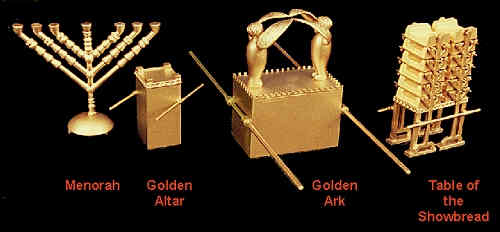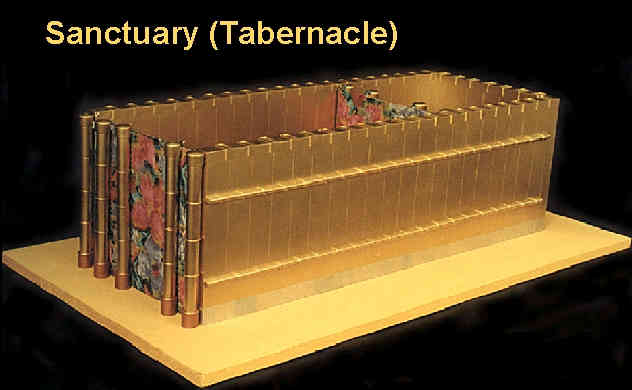|
The Temple and the Sanctuary
© By Dov Levanoni, 2002
The historical background to the Temple's construction is intrinsically related to its structure.
The first indwelling of G-d's Presence (Shechinah) with in the world was the Sanctuary (Miskan) which accompanied the Jews through their journeys in the desert as they traveled from Mount Sinai to the Land of Israel.
After the Jews entered the land of Israel, the Sanctuary stood in Gilgal for 14 years. Afterwards the ark was moved into a permanent structure, the Sanctuary of Shiloh, which was erected with the same dimensions as the Sanctuary in the desert.
In contrast to the Sanctuary which had wooden walls, a stone building was erected at Shiloh. It did not, however, possess a roof, and the curtains that had been employed for this purpose in the Sanctuary served this intent in Shiloh as well.
The next step in this process was the construction of the First Temple in Jerusalem by King Solomon. Among the differences between the Temple and the previous Sanctuaries was an increase in the size of the Altar and the size of the Temple building.
During the Babylonian exile, G-d revealed a vision of the ultimate Messianic Temple, to the prophet Ezekiel. When the Jews returned from Babylon to build the Second Temple, the desired to build that structure in accordance with Ezekiel's prophecy, but had difficulty comprehending all of its particulars. Therefore they structured the building according to the plan of the first Temple, incorporating wherever the intent was clear the innovations that Ezekiel had envisioned.

Cut Away View of the Sanctuary
The design for all of these structures emanated from prophetic vision. The structure of the Sanctuary was revealed by G-d to Moses and, similarly, it was through prophetic vision that the design for the First Temple was communicated to King David. As mentioned the vision of the Third and ultimate Temple was conveyed to Ezekiel.
Many details of the Sanctuary were changed in form and size in both the First and Second Temples. Both the Sanctuary and the two Temples employed the same sacred utensils. These included:
The Ark (Aron) - A cedar-wood chest plated with gold on both the inside and the outside. It had gold-coated staves on either side with which it was carried. The Ark was covered by the cover (Kapporet), with the two cherubs (K'ruvim) on the top.
The Show-bread Table (Lechem HaPanim) - A cedar-wood table plated with gold on which the twelve loaves of the Show-bread were placed. It also had gold-coated staves positioned at its corners.
The Golden Altar - The incense altar (Mizbeach HaK'toret) had two golden coated staves positioned at its corners.
The Menorah - A candelabrum was made of pure gold with seven lamps.
The Priestly Garments - Four garments were worn by an ordinary priest and eight garments worn by the High Priest.

Excerpted with permission from the book, "The Temple"
© by Dov Levanoni, 2002 Telephone: 972-2-581-1227,
Published by Brit Shalom, Telephone: 972-2-652-4273.
Inquires about this book and additional educational audio-visual material may be directed to the author.
| 












